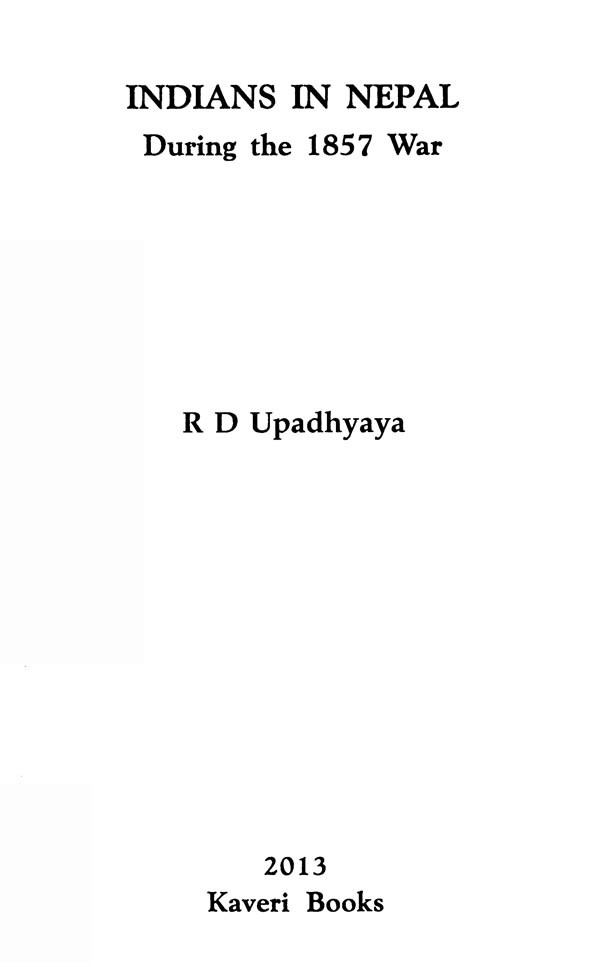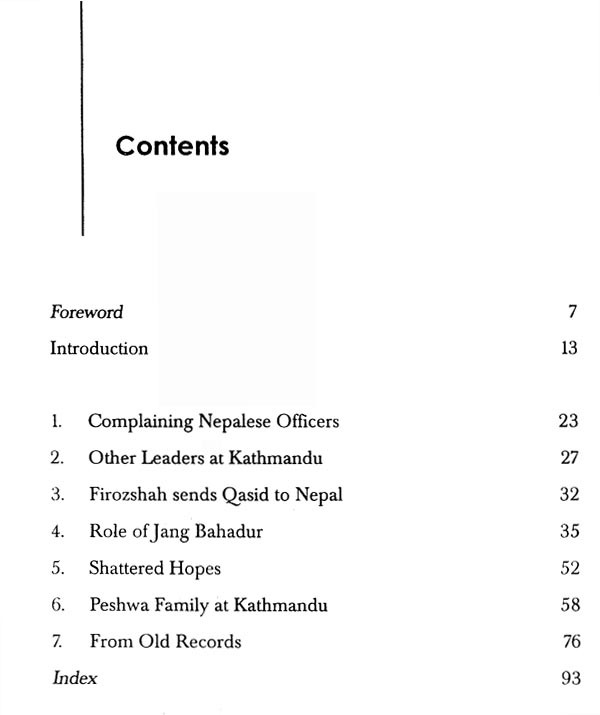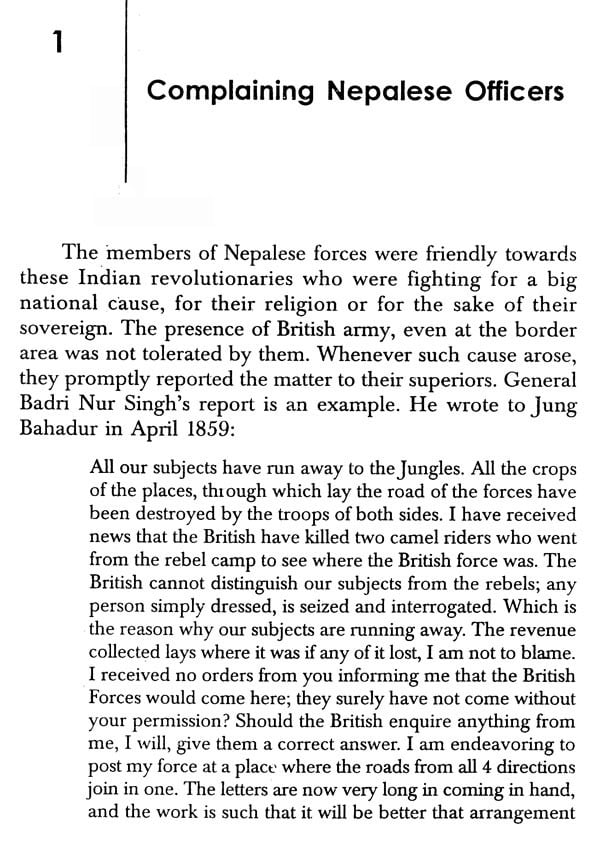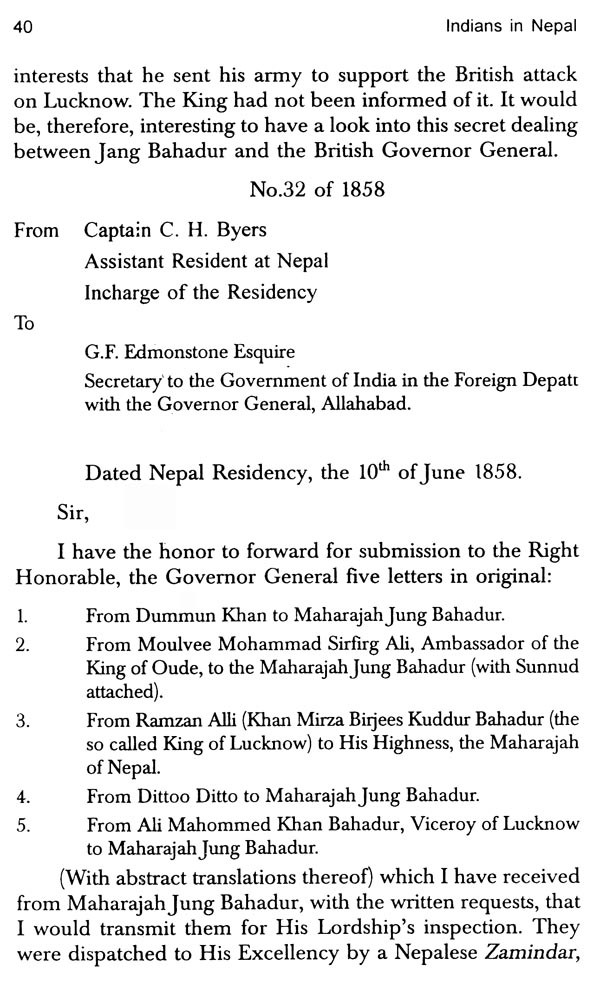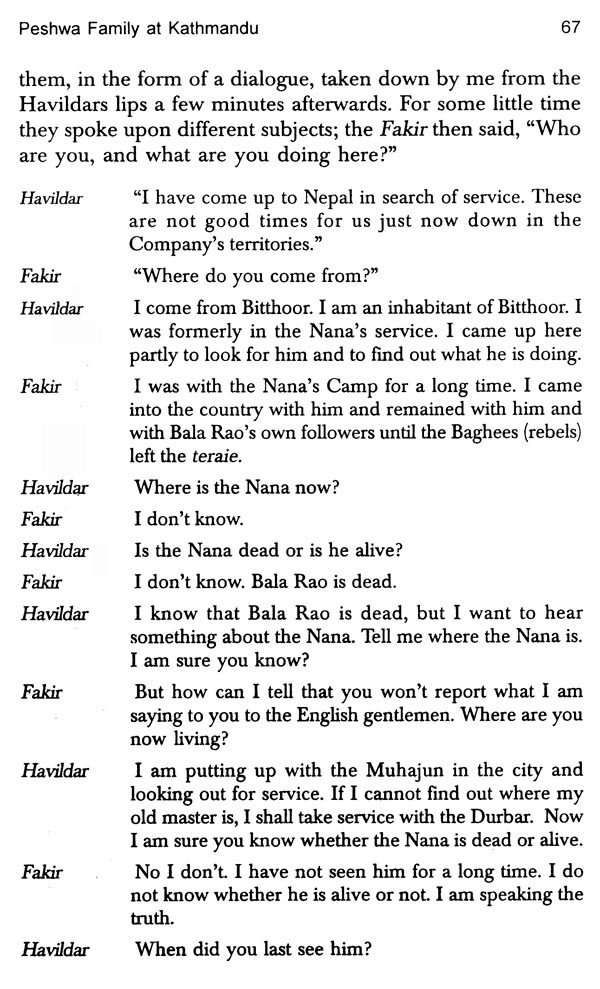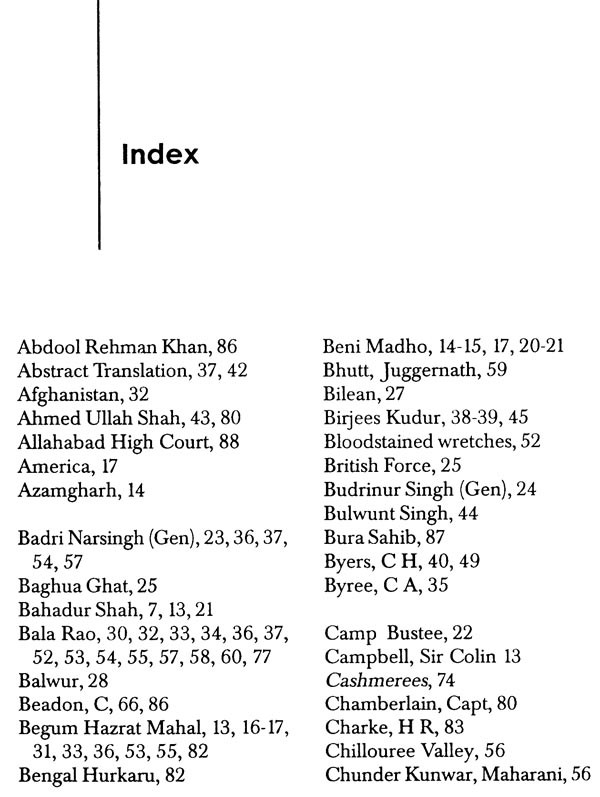
Indians in Nepal- During the 1857 War
Book Specification
| Item Code: | AZG367 |
| Author: | R.D. Upadhyaya |
| Publisher: | KAVERI BOOKS |
| Language: | ENGLISH |
| Edition: | 2013 |
| ISBN: | 9788174791368 |
| Pages: | 96 |
| Cover: | HARDCOVER |
| Other Details | 9.00x6.00 inch |
| Weight | 240 gm |
Book Description
R.D Upadhyay was born 25th September 1927 in village Sogarbar Mathura District, Pradesh. author, historian advocate, Supreme Court India, he authored books across the genres from satires, short stories, plays historical accounts. Like youth of his era he too absorbed freedom struggle in formative years. Participating Quit India Movement and joining communist forces.
The range, vitality importance of work can gauged from the fact that very authoritative qualitative account on Jallianwala Bagh massacre was brought out by author in and is being published year after year Govt. India. Also, work Shahzada Ferozeshah, (The British could never defeat or kill him and eluded them all his life) is only work available on hero motherland.
His quest truth and passion history remains insatiate and even after retirement from services Govt. India editor, YOJANA) continues search meticulously, through old records and cables from British times for past 20 years complete book Tatya Tope.
On the other hand, these very leaders and commanders of the Great Mutiny, rather the First War of Independence, were infact fighting against the odds. The Mughal emperor Bahadur Shah was by that time arrested; Rani of Jhansi had very bravely laid her life in the battlefield fighting against the British; a large numbers of Indian fighters for freedom had paid as heavily as they could the price of independence with their head, estates and property; most of the ruling chiefs Hindus and Muslims had by then submitted to the British Imperialists. Taken altogether, not a single ray of hope was in sight by the end of 1859.
Lord Clyde then made a plan to encircle the rebel troops and their leaders. He wanted to push all of them gradually towards the Nepal Frontier and thus to crush them in toto or otherwise to leave them to die of privation and disease in the fever infested forests of Terai (Foreign Secret Consultations No.3022, 31 December 1858.
It was actually the last phase of the 1857 War of Independence.
**Contents and Sample Pages**
